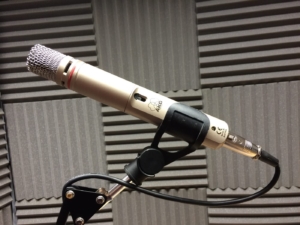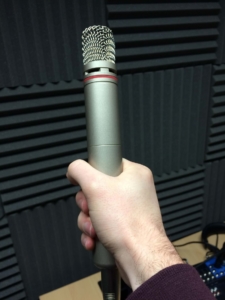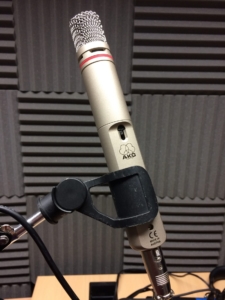AKG C1000S Microphone: a Podcasting Review
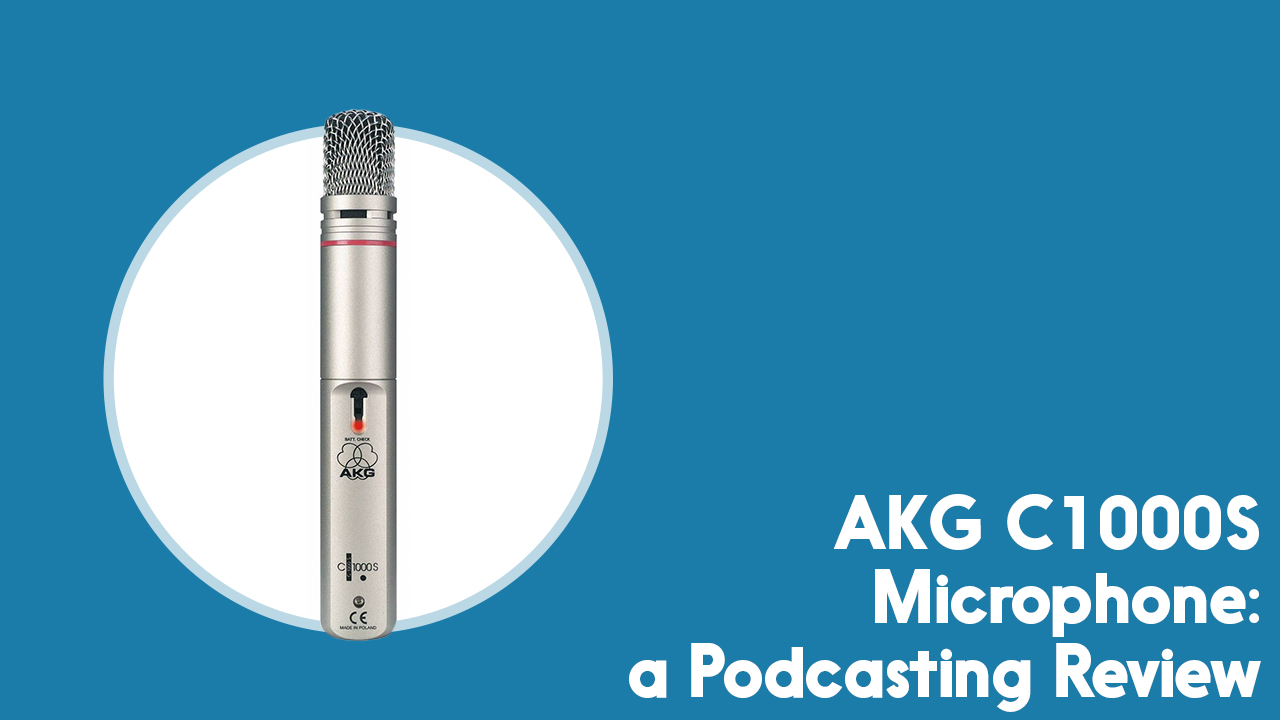
AKG describes the C1000S as “The Swiss Army Knife of Microphones”. It’s certainly a popular mic among musicians for recording both vocals and instruments, either in the studio or live. But is there a place for the AKG C1000S in
podcasting? At the price of around $150/£100 brand it falls right between the “budget” category and high quality categories, so is it worth the money? Let’s find out more.
What Kind of Mic is the AKG C1000S?
First off, this is a condenser microphone. A general rule is that condenser microphones pick up a lot more than dynamic microphones. This can often make them a curse rather than a blessing if you’re recording in less than ideal conditions. It would be slightly harsh to judge the AKG C1000S on this alone though.
The mic has the option of two different pickup patterns. ‘Cardioid’, which concentrates on picking up sound from the front of the mic, and ‘Hypercardiod’ takes that a step further, providing even more noise isolation from unwanted areas around the microphone.
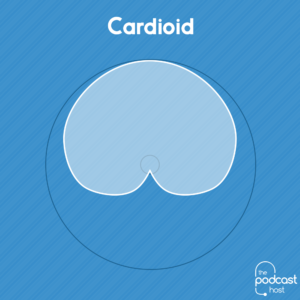
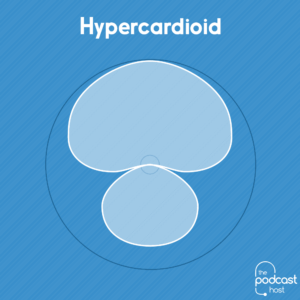
To change between the two polar pattern settings you simply need to screw on the Polar Pattern Converter, which comes as standard with the mic.
Where Would You Use It?
The AKG C1000S is commonly used by musicians both in the studio and on stage. Like most microphones it is better suited to being attached to a stand or boom arm, as opposed to being held. However it operates pretty well in conditions where you need to hold it in your hand whilst recording. There’s not much in the way of handling noise.
This, combined with its relative durability, makes it a good ‘on the road’ option. That’s pretty unusual for a condenser microphone as they’re often considered to be pretty fragile.
AKG lists its “gold sputtered microphone capsule and XLR pins” which “give high immunity against humidity” as a selling point. This might well have saved the bacon of many musicians who’ve left their gear in the car overnight. The C1000S’s more expensive cousins in the world of condenser mics wouldn’t be so forgiving.
What Kind of Recording Setup Suits the AKG C1000S?
Being an XLR microphone, the AKG C1000S needs to be connected to a mixer, recorder, or preamp, as opposed to a USB mic that can plug directly into your computer. It runs on phantom power, but one of the unique things about this mic is that you can also power it with a couple of AA batteries. This is a great safety net and backup plan for those who do a lot of recording on the road, using a variety of different equipment which can often throw up problems.
Being a condenser microphone you would ideally want to record in silence, and in sound dampened conditions. However let’s remember that the AKG C1000S is often found on the stage at gigs. Even if you’re doing some location interviews at a busy conference, you could just switch to Hypercardioid to help isolate the worst of the immediate background noise around you.
What Does it Sound Like?
I recorded this sample in semi sound dampened conditions through a Yamaha MG10 mixer. I’ve applied no post-processing, noise reduction, normalisation etc to the recording. The first part of the recording was done with a boom arm, and the second part was hand held. I’ve left some roomtone at the end.
What Does it Come With?
You’ll usually get a microphone bag, a stand adapter, a windscreen, and the Polar Pattern Converter (PPC1000).
How Much Does the AKG C1000S Cost?
Around $150 or £100 to buy new on Amazon. Bear in mind, though, that unless you have a recorder, mixer, or preamp already, this will be an additional cost if you want to use this mic.
Summary: The AKG C1000S – A Good Podcasting Mic?
There’s no pressing case for using the AKG C1000S as your podcasting mic, but then again, there’s no real case against it. Certainly if you were looking to use a condenser mic that was affordable and durable, then it would be a pretty good option for you. I personally still prefer to use dynamic mics for podcasting purposes, but if you want a condenser that can go on the road, then this is definitely a good option.
